UML (Unified Modeling Language)
-
it is a general-purpose, developmental, modeling language in the field of software engineering that is intended to provide a standard way to visualize the design of a system
-
before writing code, we need to design our computer system
- when working with a team, information needs to be shared
- need to have some plan or representation of the system
- when working with a team, information needs to be shared
-
UML is for describing system components and their interrelationships
-
it gives us a list of terms, abstractions, concepts and tools for high level modeling of the system
-
it is to some extent a design patterns in the programming world
-
the rules of UML is not limited to programming
- it is also used for modeling business processes, system design, drawing up organization, etc.
-
for visualizing your classes
-
example: class diagrams
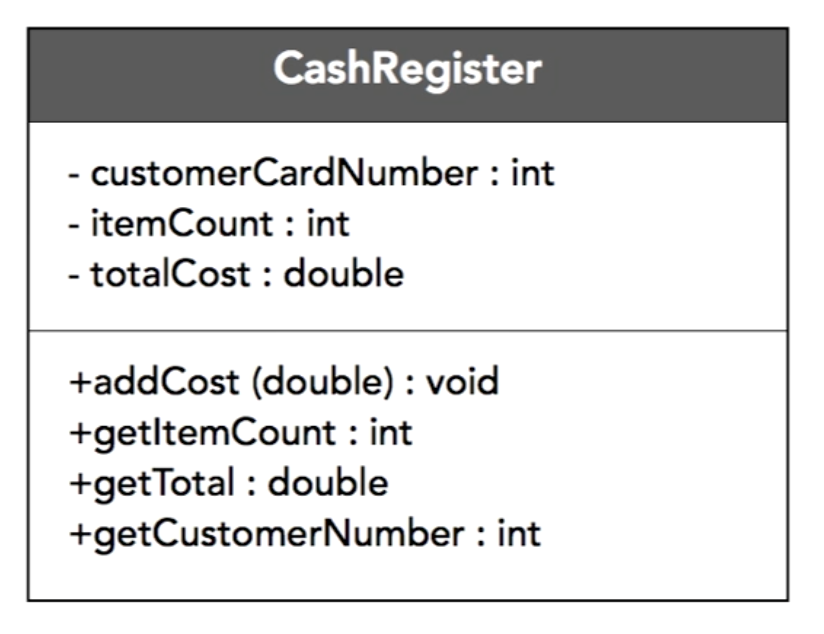
- top is the class name
- middle is the list of properties
- bottom is the methods the class has
Flowchart Symbols
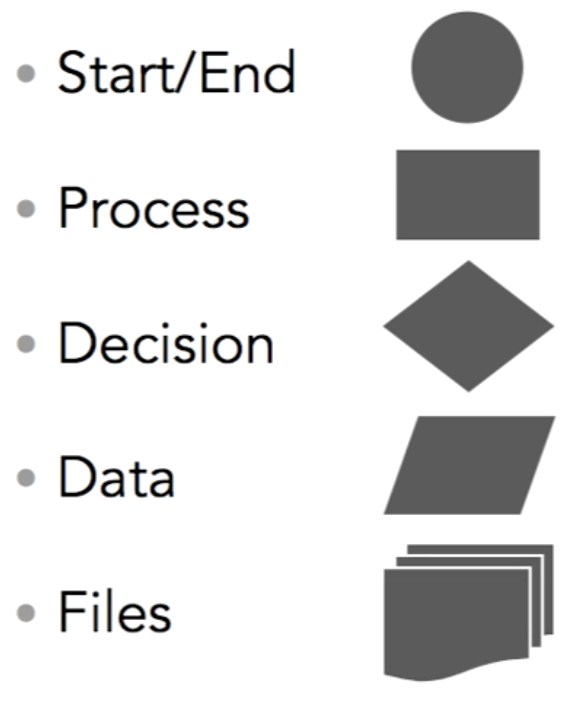
Access modifiers
+public-private#protected
Formats
-
underlined textstatic fields or methods -
ALL_CAPSconstant fields or final -
italicabstract methods -
example: UML relations
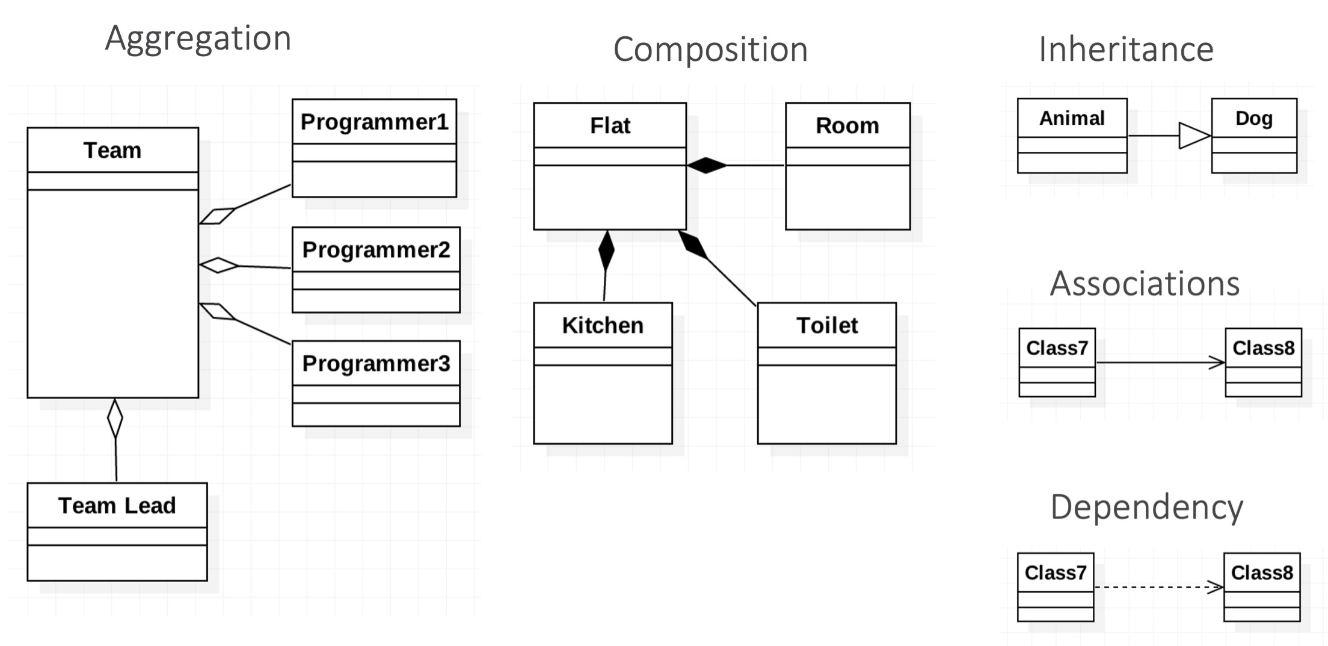
-
example: UML relationship
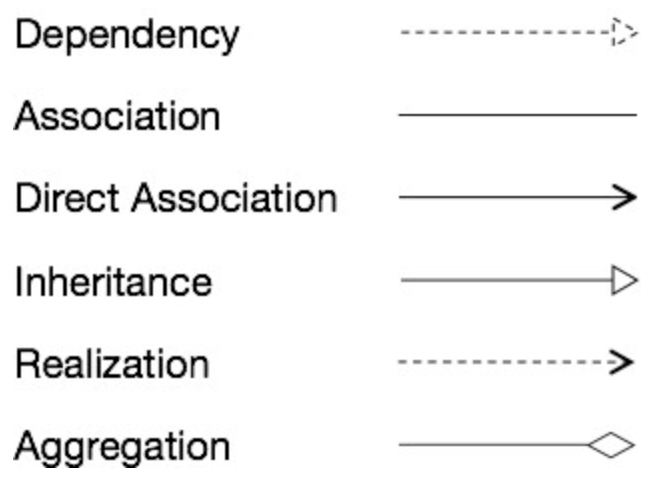
Association
-
Once classes and attributes have been identified and placed into a diagram, the next stage is to add
Associations- Usually, the system is not limited to just one class, there are tens, hundreds of classes, or even more
- Naturally, all these classes somehow interact with each other, somehow communicate, send messages to each other, call each other's methods, send events, and so on
- So the next step after creating those classes should be the visual representation of the relationship between these classes
-
There are different types of relationship between two classes / objects
-
The most basic type of relationship is
association- which means that the two classes are somehow related to each other
- we do not yet know exactly how this relationship is expressed and are going to clarify it in the future
-
This usually happens in the early stages of system design, when we know that there is a relationship
- but what specific relationship - inheritance, composition, or something else is not yet clear
-
When designing the system more globally
- The association helps when we indicate that 1 class in some way interact with another class
- At the initial stage, this is enough
-
An association is a relationship in which objects of one type are somehow related to objects of another type
- i.e. an object of 1 type contains or somehow uses an object of another type
- The player plays in a team
- We do not yet know what kind of relationship they have, or we are not interested in it at this stage of the design
- But we know that there is a relationship
-
directional association-
the arrow shows us that we have a component that uses another component
-
In this case the CustomService uses the CustomRepository component, and not vice versa
-
example: Directed association
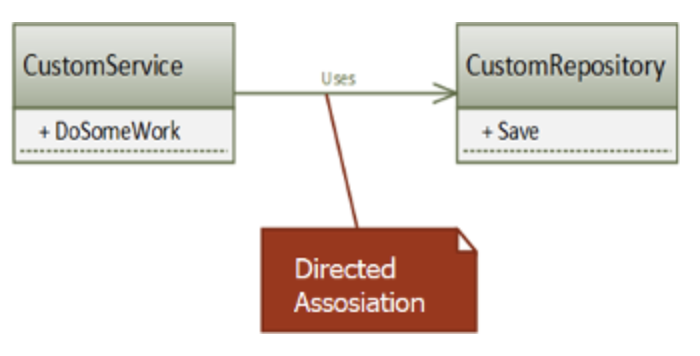
-
Inheritance
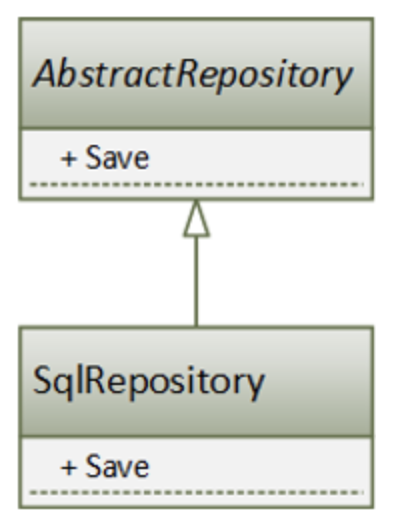
-
A more precise type of relationship is the public inheritance relationship (
IS A Relationship)- which says that everything that is true for the base class is true for its successor
-
With its help we can
- get polymorphic behavior
- abstract from the concrete implementation of classes
- deal only with abstractions (interfaces or base classes)
- do not pay attention to implementation details
-
Although inheritance is a great tool in the hands of any OOP programmer
- it is clearly not enough for solving all types of problems
- Firstly, not all relationships between classes are defined by the "is a" relationship
- secondly, inheritance is the strongest relationship between 2 classes that cannot be broken at runtime
- this relationship is static and, in strongly typed languages, is determined at compile time
-
in JavaScript, it has prototypal inheritance and can be changed for inherited classes
- properties can be changed by just changing prototypes
- But this is more an exception rather than a rule
- Because you cannot do this in classical inheritance
- once inherited in the source code, at run time you will not break this connection and you will not change the base class
- That is why inheritance is the strongest relationship between objects
- That is why architects and system designers recommend using inheritance only when it is necessary
- Because you cannot do this in classical inheritance
-
there is the concept of
preferring composition over inheritance- this suggests that composition can be broken at run time
- and you can replace one object in the composition at runtime with another, change the behavior dynamically
- You cannot do this with the inheritance
Composition and Aggregation
-
When relationships between components go beyond inheritance
- relationships such as composition and aggregation come to our rescue
- They both model a
HAS-A Relationshipand are usually expressed in that the class of a whole contains the fields (or properties) of its constituent parts
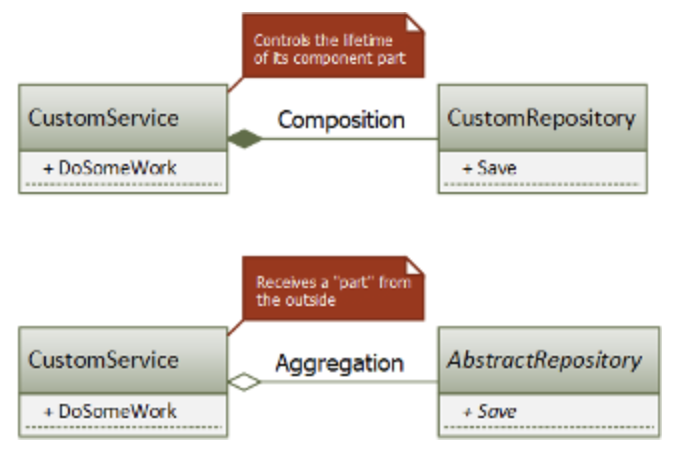
- the diamond is always on the side of the whole, and the simple line is on the side of the component
- a filled rhombus indicates a stronger bond - composition
- an open rhombus indicates a weaker bond - aggregation
- The difference between composition and aggregation
- composition: the whole explicitly controls the lifetime of its component part
- the part does not exist without the whole
- aggregation: although the whole contains its component part, their lifetimes are not related
- e.g.: the component part is passed via constructor parameters
- composition: the whole explicitly controls the lifetime of its component part
CompositeCustomServiceuses composition to manage its constituent partsAggregatedCustomServiceuses aggregation- explicit control of the lifetime usually leads to a higher coupling between the whole and the part
- since a specific type is used that closely connects the participants with each other
class CompositeCustomService {
// Composition
private readonly repository: CustomRepository = new CustomRepository();
public doSomething() {
// Usage of repository
}
}
class AggregatedCustomService {
// Aggregation
private readonly repository: AbstractRepository;
constructor(repository: AbstractRepository) {
this.repository = repository;
}
public doSomething() {
// Usage of repository
}
}
- Another example of composition
- Let us say a bicycle is a whole part and its components (shock absorbers, wheels, handlebars) are parts
- a single shock absorber without a bike makes no sense
- An example of aggregation
- Suppose there is a university or a school as a whole and teachers, professors as parts, for a certain period they may be part of this university, in some period they may not be included
- They can exist without this university after the university is destroyed, that is, its lifetime is over